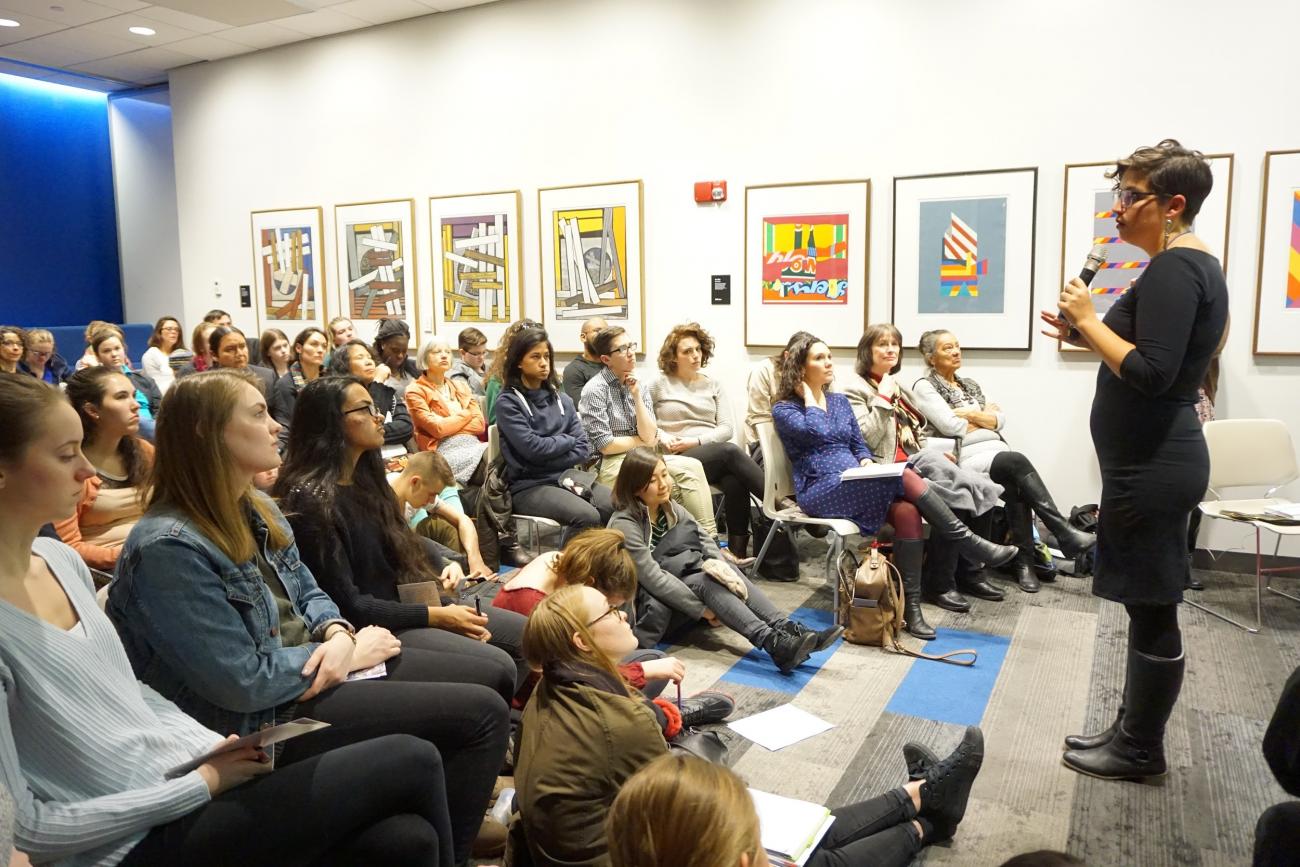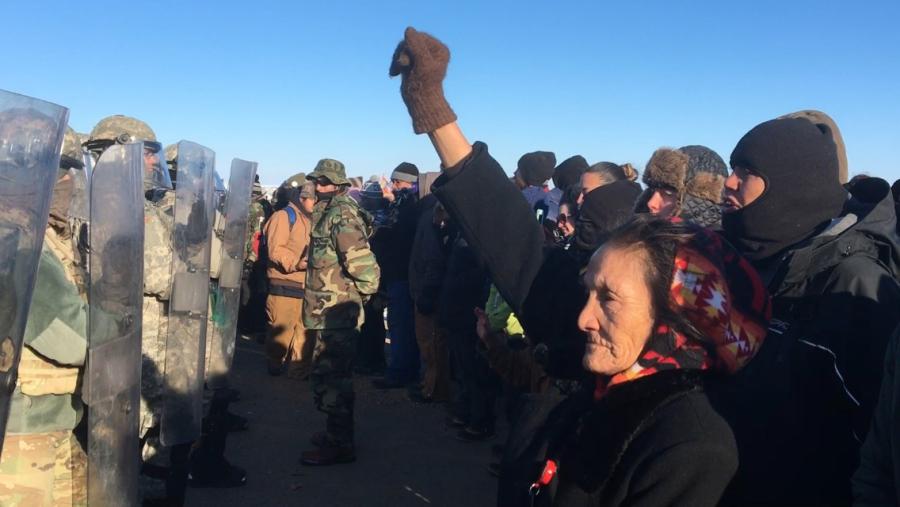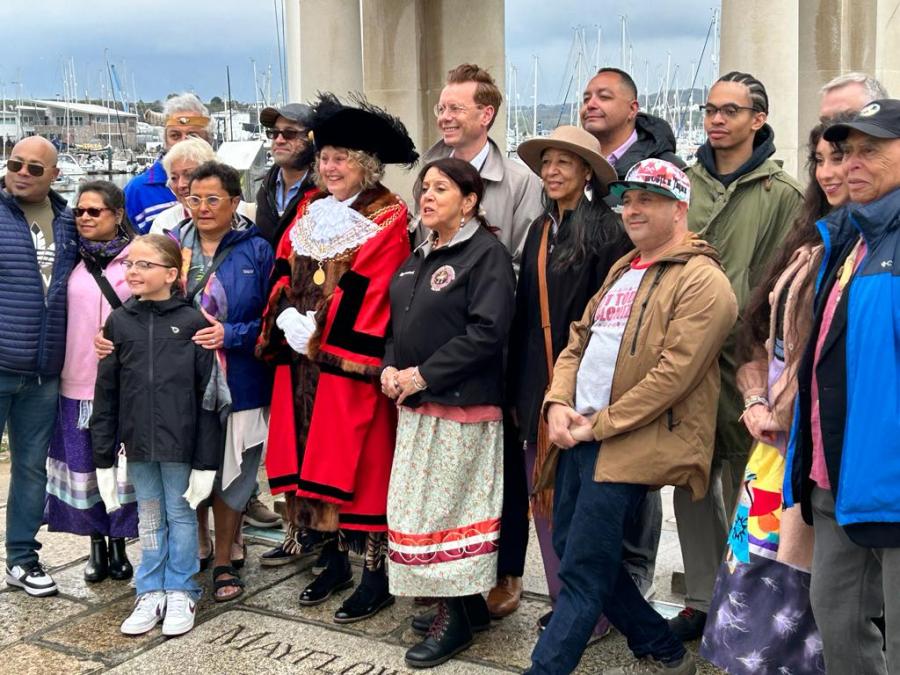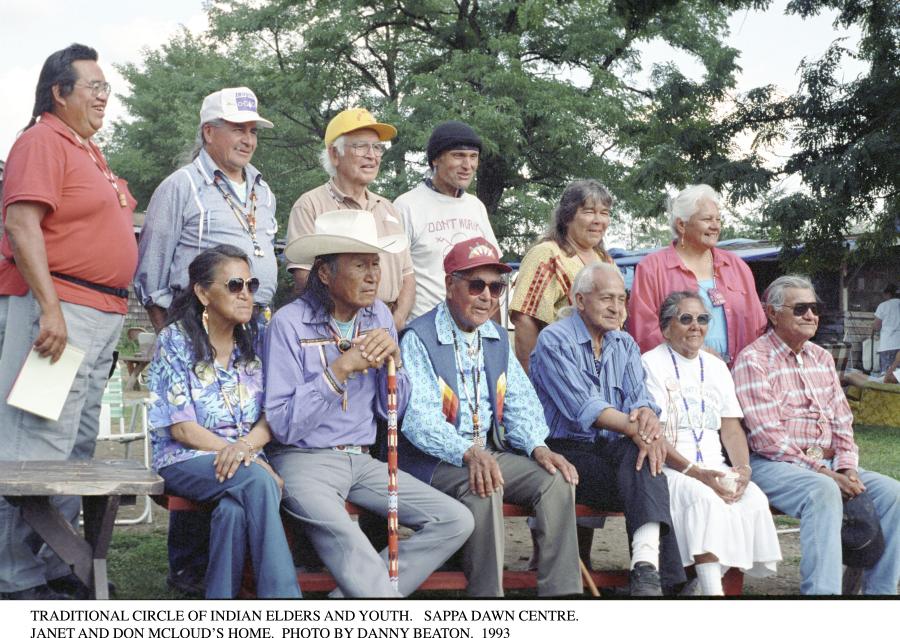
Grace Archambeault
Northeastern Crossing was standing room only on January 31, 2017 for Dr. Adrienne Keene’s talk “Cultural Appropriation, Indigenous Social Media & Racism.” Students from many universities, peoples from many different tribes, and several elders came to hear Dr. Keene speak about cultural appropriation, Indigenous social media, and racism--all related to the current political climate and the resistance to the Dakota Access Pipeline. Joanne Dunn (Mi’kmaq), former Executive Director of the North American Indian Center of Boston, introduced Keene with several stories and a prayer to the creator.
An activist, a master blogger at Native Appropriations, and professor at Brown University, Dr. Adrienne Keene (Cherokee) started her lecture, as she typically does, introducing the current stereotypes of Native Americans, which are easily found on a Google image search. She said she is constantly updating her image database as she comes across more offensive representations of Natives in pop culture, examples included sports team mascots such as the Cleveland Indians, Halloween costumes, clothing lines, fireworks, and many more. “Any day you can walk down the street and see five of these images…What are the broader messages that these images are telling us,” she says. Stereotypes of the Native Americans are male dominated, represent mainly Plains Tribes , are set in the historic past and reflect how a large portion of the US population sees Native people. What these images do not convey is the cultural diversity of Native people, and the 567 federally recognized tribes. Native Americans are not a people of the past, they make up 1-3 percent of the US population. Keene emphasizes that a major threat to Native cultures is when “negative stereotype images that surround us everyday, start to get normalized.”
Seven years ago, Keene launched the blog Native Appropriations as a platform to address Native stereotypes in pop culture and to explain why representation matters. She saw that imagery of Native peoples was “completely disconnected from our experiences and from contemporary communities.”The blog transformed into a space to address the multitude of problems that Native communities face, one example being blood quantum. Keene has now added Twitter to her activist tool belt. The convenience of Twitter has allowed her to constantly publish about current events and share information about ways to get involved. “Now, I can see tangible change when I Tweet about an action,” she says.
“What it means, as Native people, to have a collective voice on the internet? We can work together across tribal lines, across community issues and really come together to make things happen,” she states. Keene reached out to her blog and Twitter audience to ask about the effects of having a united voice on social media as Indigenous people. She summarizes the responses in three points:
· “Creating a global community of indigenous activists and allies.”
· “Creating a vocabulary, resources, and support to ‘speak out’.”
· “Creating challenges to deeper issues of white privilege, colonialism, and white power.”
Keene has been addressing cultural appropriation with her blog, Twitter, university courses, and workshops. She illuminates negative economic and moral impacts on Native people. Cultural appropriation is a violation of intellectual property that our current legal system is not set up to protect, because most cultural property is collectively owned. Additionally, the groups that are using these cultural images are making money, while the Native communities are not seeing any of these profits or benefits from their use. Morally, cultural appropriation is taking away the unique identities that make Native people who they are and mass producing them for sale to the general public. Keene describes the main issue of cultural appropriation as “situated in a colonial power structure that exhibits settler dominated society taking from a marginalized community.”
The marginalization of Native land rights by non-Native allies, with good intentions, has begun to surface in anti-Trump campaigns and in the Dakota Access pipeline resistance. Slogans like “This land belongs to all of us” and “We are all immigrants” in an attempt at equality, becomes a tool of erasure of Native history and connection to the land, according to Keene. She shared a more inclusive and positive message, “No ban on stolen land”, which welcomes immigrants, as well as acknowledging land rights.
Indigenous populations have been fighting this battle for hundreds of years. They know what they need to do and they are doing it. “We have gathered those tools of survival and those tools of resistance through surviving the apocalypse…I strongly believe that Indigenous knowledge will save this world,” said Keene.
Keene ended her talk with an action oriented agenda. With many Native and non-Native people in the room, she explained what can be done now:
· Submit a public comment to DAPL Environmental Impact Study by Feb. 20, 2017
· Help eliminate erasure tools such as the slogans “We are all immigrants.”
· Acknowledge American history and don not erase the discriminatory past.·
· Talk to each other openly and start the conversation to break down stereotypes.
“No Ban on Stolen Land. We need to be giving the power back to Indigenous people on how they want themselves to be seen.”
Dr. Adrienne Keene’s blog can be found here: http://nativeappropriations.com



